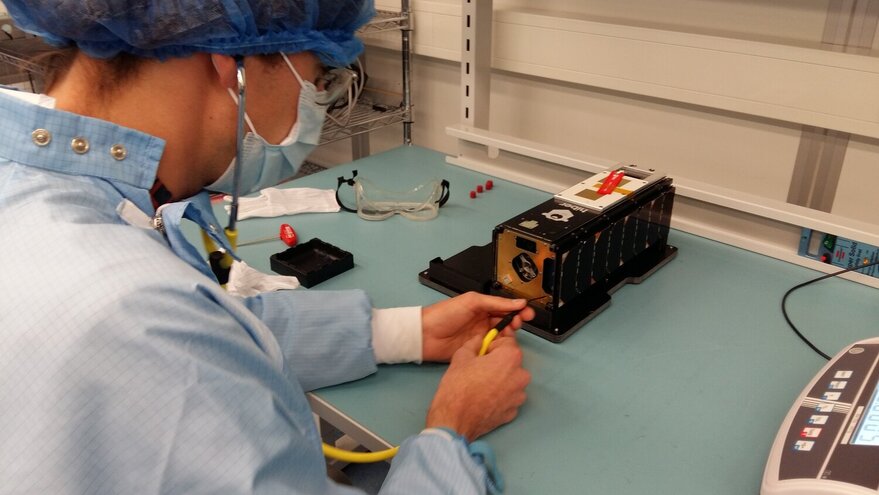Products You May Like
SAN FRANCISCO – With recent grants from government agencies, Dawn Aerospace is refining its nitrous-based satellite propulsion technology.
Dawn, based in New Zealand and the Netherlands, announced in May the first in-orbit demonstration of its B20 thrusters on a D-Orbit ION Satellite Carrier. Since reaching that milestone, the company has been signing up new propulsion customers, primarily in Europe and the United States, every four to six weeks,” Dawn CEO Stefan Powell told SpaceNews.
At the Small Satellite Conference earlier this month in Logan, Utah, Dawn executives said the company had 30 thrusters in orbit and another 36 delivered to customers for integration with satellites awaiting launch.
In recent weeks, Dawn has won grants to further its research on small satellite thrusters fueled with nontoxic propellants.
On Aug. 26 Dawn announced a $1.5 million grant from the New Zealand Ministry of Business Innovation and Employment to conduct research with the German Space Agency DLR Institute of Combustion Technology.
Dawn also announced a 200,000 euro ($199,000) award in early August from the European Space Agency to bolster the performance of its green bi-propellant satellite thrusters. A 1.4 million euro grant to Dawn from the European Commission was announced in July.
Dawn propulsion systems are designed to offer the same performance of thrusters fueled with hydrazine, a compound classified by the European Commission as a substance of very high concern because it is toxic and a probable human carcinogen.
Dawn’s “technology is now at a point where people can believe in it,” Powell said. The number of thrusters in orbit is significant enough to make “the risk more palatable for more and more of the market,” he added.
Still, Powell understands why some satellite developers continue to opt for hydrazine-fueled thrusters with decades of heritage.
“The system we’re proposing is only going to be an option for them when it’s proven,” Powell said. “I don’t mean 30 thrusters. I mean hundreds of thrusters for many years. We are on the path to that.”
In addition to small satellite propulsion, Dawn has conducted more than 30 flights of Mk-II Aurora, a sub-scale suborbital spaceplane demonstrator designed to takeoff and land horizontally at conventional airports.
During a flight conducted in New Zealand earlier this month, “we did a powered flight and then cut the engines for a gliding landing to simulate coming back from reentry,” Powell said. “We were making sure that it was pilot-able and that we can do the energy management.”
